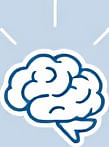Advantages of Single-Tasking for Everyday Life
 by Thaddeus Blanda
by Thaddeus Blanda
Discover how single-tasking can ease mental overload by focusing on one activity at a time. This approach offers practical benefits for students and professionals, improving focus and reducing stress in daily routines. Learn simple strategies to enhance productivity.

In our busy lives, the constant pull of multiple demands can overwhelm the mind. Single-tasking emerges as a simple yet effective way to manage this. By concentrating on one activity, individuals can lessen the strain on their cognitive resources.
The Basics of Single-Tasking
Single-tasking involves dedicating full attention to a single activity without switching. This contrasts with common habits of juggling tasks, which can fragment focus. For students preparing for exams, single-tasking allows deeper absorption of material. Professionals handling reports might find it helps produce higher-quality work.
How It Reduces Cognitive Load
Cognitive load refers to the amount of mental effort used. When people multitask, their brain divides resources, leading to fatigue. Single-tasking streamlines this process. For instance, reading a book while eating might mean neither activity is done well. Instead, focusing solely on reading can improve comprehension and enjoyment.
One key advantage is better memory retention. Studies show that undivided attention aids in storing information effectively. In work settings, this means fewer errors and faster completion times. Cognitive load decreases because the brain isn't constantly shifting gears.
Practical Tips for Implementation
To start, begin with short periods. Set a timer for 25 minutes to work on one task, then take a break. This technique, similar to focused work sessions, builds the habit gradually.
For students, apply single-tasking during study sessions. Turn off notifications and concentrate only on notes or lectures. This can lead to better grades and less stress before tests.
Professionals can use it in meetings by listening fully without checking emails. Over time, this practice enhances decision-making and creativity. Another tip is to prioritize daily tasks with a simple list. Tackle items one by one to maintain steady progress.
In family life, single-tasking means giving full attention during meals or conversations. This strengthens relationships and reduces feelings of overwhelm.
Real-Life Examples
Consider a student who studies while watching TV. The result is often poor retention and added frustration. By switching to single-tasking, they might finish studying faster and feel more refreshed.
For a professional, writing an email while on a call can cause misunderstandings. Focusing on the call first ensures clear communication, avoiding follow-up issues.
These examples highlight how single-tasking fosters efficiency. It also promotes overall well-being by preventing burnout from constant mental juggling.
Long-Term Benefits
Over time, adopting single-tasking leads to improved habits. People report higher energy levels and greater satisfaction in their work. For those interested in cognitive science, this method aligns with ways the brain processes information naturally.
In educational contexts, it supports learning by allowing concepts to sink in deeply. In professional environments, it boosts output without the need for extended hours.
To sustain this, track progress with a journal. Note how focusing on one task affects daily energy and mood. Adjustments can be made based on these observations.
Encouraging Adoption
Everyone can benefit from trying single-tasking. Start small, like during hobbies or chores, and expand from there. The results—clearer thoughts and reduced mental fatigue—make it worthwhile. By making this a regular part of life, individuals can achieve more with less effort.
In summary, embracing single-tasking offers a pathway to lighter cognitive demands. It empowers students, professionals, and others to handle everyday challenges with ease.
